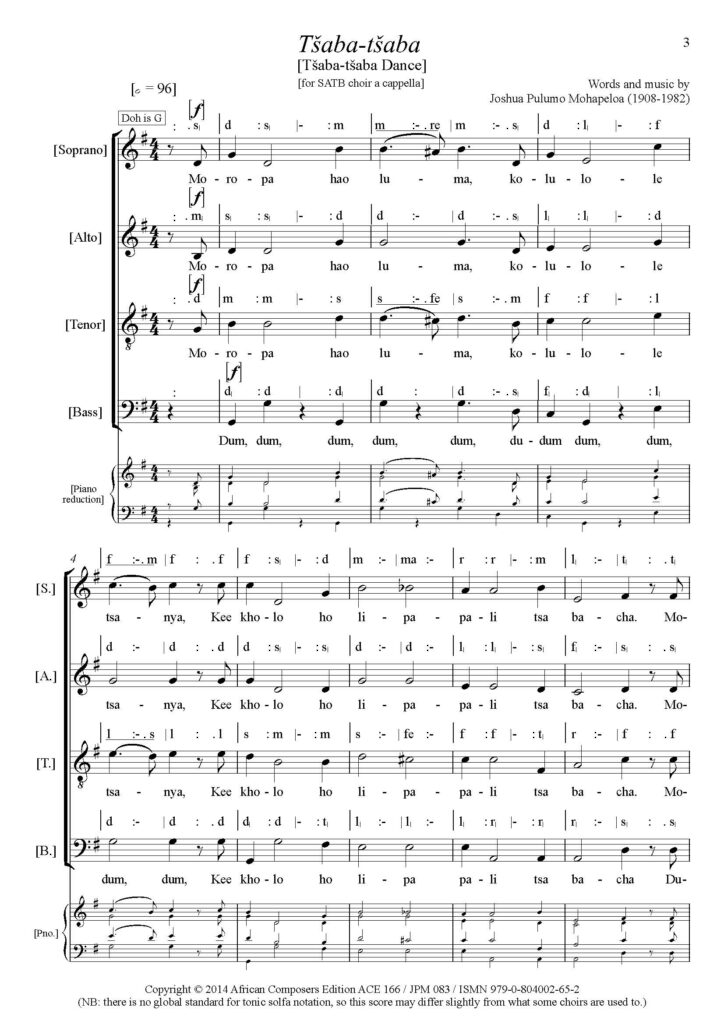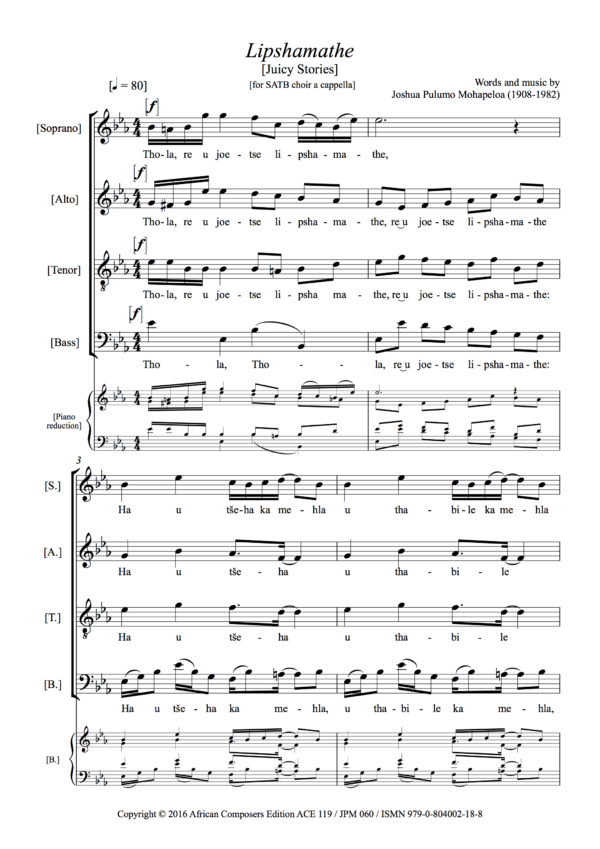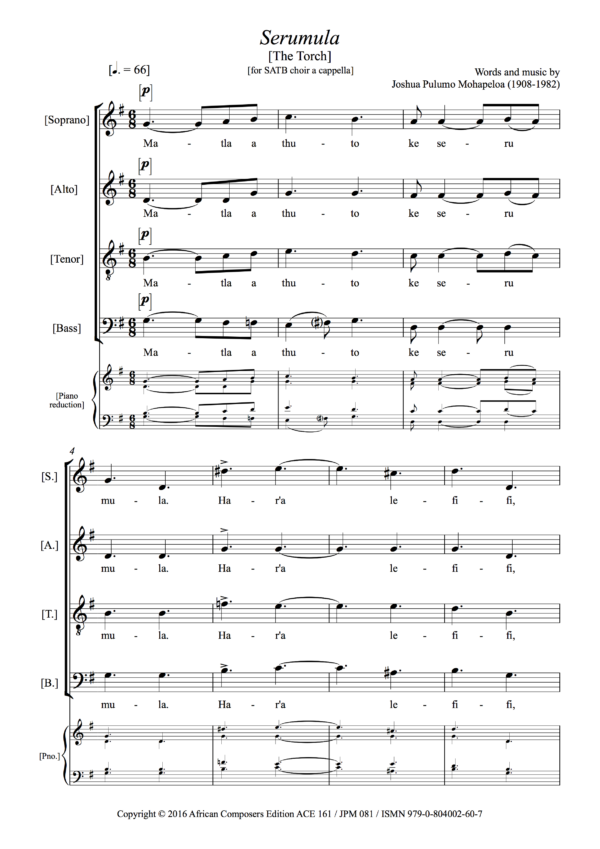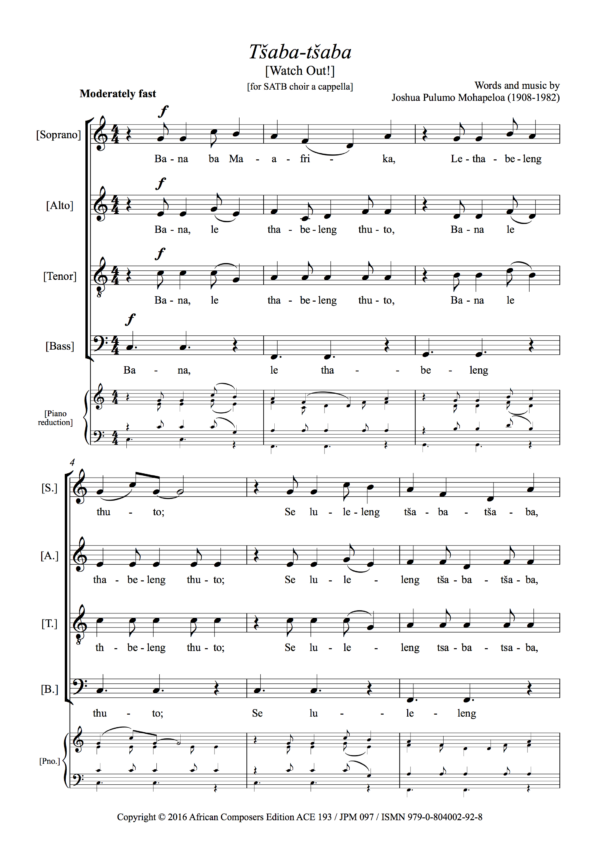Tšaba-tšaba

R39.00
Mohapeloa wrote ‘Tšaba-tšaba’ in the 1940s, one of two songs by him called Tšaba-tšaba. The second was written only a few years after this one, but they tell very different stories. The later one (JPM097) appears in the collection Khalima-nosi tsa ‘Mino oa Kajeno: Harnessing Salient Features of Modern African Music, at the beginning of Volume IV of this Critical Edition. This one (JPM083) recalls Mohapeloa’s years in Johannesburg, and it is quite evident, says his brother J.M. Mohapeloa in a biographical essay, that when he wrote it “the author was missing the dances at Bantu Men’s Social Centre and the Inchcape Hall, where people danced in such an admirable way” (Mohapeloa and Phakisi 1987). ‘Tšaba-tšaba’ is a cautionary phrase in Sesotho that as a noun literally means ‘state of fear’, or as a verb, ‘be very afraid’. It gave its name to the popular fast jazzy dance in the 1930s and 40s where couples were always ‘watching out’ that they didn’t bump other people while dancing so energetically; or perhaps trying to bump someone without being bumped. It was thus a kind of game within a dance, as the song implies. The swirling skirts described in the last two lines remind us of the wonderful images of dancers captured by the photographers of Drum magazine in the 1950s.



